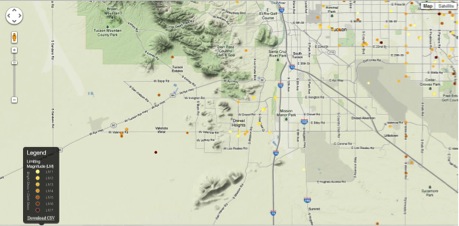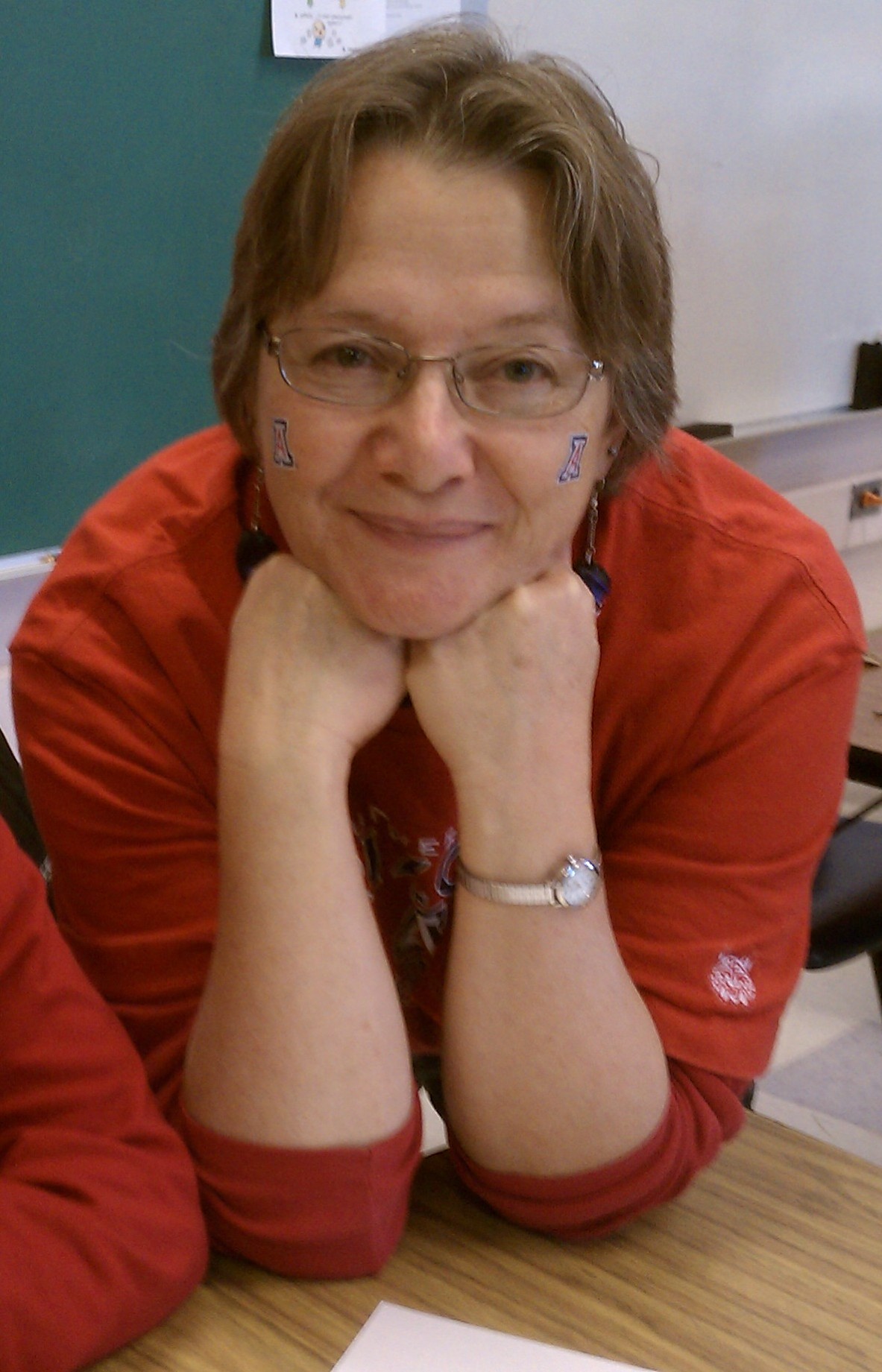Report
by Beverley Sutton
Problem: No budget for field trips, so how to bring real science into the lives of my students?
Solution: Globe at Night campaigns!
I teach 8th grade science at Pistor Middle School and this is the first year I have successfully involved student citizen scientists in the Globe at Night campaign. I’d tried before, but this time I offered extra credit as an incentive and that seemed to do the trick. Interestingly, many of the students who eventually did observations were in no need of extra credit; they weren’t averse to the idea of extra credit of course, but they simply enjoyed the experience of doing real science. According to the data I downloaded today, together we made 48 observations!
This screenshot of the GAN “mapapp” shows the cluster of observations around the Drexel Heights neighborhood. Pistor Middle School is located at 5455 South Cardinal Ave, Tucson, AZ 85746, and this is the neighborhood where most of my students live.

Many of my students do not have computers or internet access at home and at first this was a real barrier. A few reported on paper and I input their data for them. I plan to streamline this process next year.
For those who did have access, I instructed them to input their nearest major cross streets as location data if they were not using a mobile device with GPS enabled. This led to some hilarity and confusion when I couldn’t find the observations of one student who insisted he was observing and entering his observations. I asked him to bring me a photograph of the confirmation of his next observation. Turns out he’d misspelled the cross street, and so Google went with Valencia only and kept placing him in Valencia, Spain! It is possible I have a few more “lost” student observations, so if anyone spots variations on “Mrs. Sutton’s Science Class” in either the location or sky conditions comment boxes from some random part of the world … they are one of mine.
I also found that students did far better locating and reporting on Orion than they did with Leo. I need to do a more thorough job of teaching them how to find Leo next year. I recommended the excellent Google Sky mobile app to those students with mobile devices and that helped a lot.
The current 8th grade curriculum doesn’t include astronomy, or much in the way of energy/light, so this year it was not possible to adequately include dark sky awareness in day-to-day lessons. However, next year with the new Next Generation Science Standards and the new Common Core requirements I will be able to justify incorporating Dark Skies/Globe at Night information under the performance expectations in ESS3: Earth and Human Activity. I plan to pair it with Tucson Electric Power’s “Bright Students” outreach program to spread awareness of light pollution and energy usage.
I predict that next year Mrs. Sutton’s 8th Grade science class will be a major contributor to Arizona’s Globe at Night observations. Thank you for this opportunity to bring real science into my classroom and my students’ homes.
###
 Beverley Sutton has worn many hats in her varied career: medical microbiologist, surgical researcher, computer programmer, and now 8th grade science teacher at Pistor Middle School in Tucson, Arizona. Although the current 8th grade curriculum does not include any overt astronomy, she sneaks it in wherever possible. Dark skies and energy conservation are passions she has pursued for many years.
Beverley Sutton has worn many hats in her varied career: medical microbiologist, surgical researcher, computer programmer, and now 8th grade science teacher at Pistor Middle School in Tucson, Arizona. Although the current 8th grade curriculum does not include any overt astronomy, she sneaks it in wherever possible. Dark skies and energy conservation are passions she has pursued for many years.








Comments